#National Rail Museum
Explore tagged Tumblr posts
Text
Embark on a Journey Through Time: Exploring the National Rail Museum in Delhi
In the heart of India's capital city, Delhi, lies a treasure trove of history, innovation, and nostalgia – the National Rail Museum. A haven for railway enthusiasts, history buffs, and families alike, this unique museum offers an immersive experience that takes visitors on a captivating journey through the evolution of Indian railways. With its fascinating collection of vintage locomotives, carriages, and exhibits, the National Rail Museum stands as a testament to India's rich rail heritage.
Preserving the Past: A Glimpse into Railway History
The National Rail Museum, established in 1977, holds the distinction of being one of the oldest and finest rail museums in the world. Spread over an expansive area, the museum showcases a diverse range of exhibits that capture the evolution of the Indian railway system from its humble beginnings to the modern era.
One of the highlights of the museum is its impressive collection of vintage steam locomotives and other iconic engines that once traversed the Indian subcontinent. The oldest locomotive on display dates back to 1855, offering visitors a glimpse into the earliest days of rail travel in the region. The "Fairy Queen," a well-preserved steam engine built in 1855, holds the distinction of being the world's oldest operational steam locomotive.
A Journey through Innovation and Progress
As visitors stroll through the meticulously curated galleries, they are treated to a comprehensive view of how the Indian Railways evolved over the years. The museum features a wide array of railway artifacts, signaling equipment, historical photographs, and interactive exhibits that highlight the technical advancements and the impact of railways on society.
One of the most captivating sections of the museum is the indoor gallery that showcases a collection of royal carriages used by Indian royalty and dignitaries. These ornate carriages, adorned with intricate woodwork and luxurious interiors, provide a glimpse into the opulence and grandeur of train travel during the colonial era.
Family-Friendly Entertainment and Learning
The National Rail Museum is not just a repository of artifacts; it's a living and breathing space that offers engaging activities and experiences for visitors of all ages. The toy train ride around the museum premises is a favorite among children and adults alike. The joy of riding a mini train through lush gardens while passing by historic locomotives is an experience that creates lasting memories.
Additionally, the museum hosts workshops, educational programs, and exhibitions that delve into the science, technology, and history of railways. These initiatives provide a fun and interactive way for visitors to learn about the various aspects of rail transportation.
Preserving the Future: A Symbol of National Pride
The National Rail Museum isn't just a celebration of the past; it also serves as a reminder of the importance of preserving India's rail heritage for future generations. The museum's efforts to restore and maintain its vast collection of vintage locomotives and carriages are commendable, as they ensure that these historical treasures remain accessible to the public.
In a world dominated by rapid technological advancements, the National Rail Museum stands as a beacon of nostalgia, an educational hub, and a place that evokes a sense of wonder and appreciation for the role that railways have played in shaping India's growth and connectivity.
Plan Your Visit
For those intrigued by history, technology, and the romance of rail travel, a visit to the National Rail Museum in Delhi is a must. It offers a unique opportunity to step back in time, explore the evolution of railways, and gain a deeper understanding of the impact of this mode of transportation on the nation's development. Whether you're a railway enthusiast, a history lover, or simply someone looking for an engaging and informative outing, the National Rail Museum promises an unforgettable experience that will leave you with a newfound admiration for India's rail heritage.
0 notes
Text
the belobog history and culture museum event is so funny because i don’t want to do anything else. why would i want to do simulated universe or calyxes or whatever when i can play Museum Management Simulator
#museum management simulator in MY honkai star rail??? it’s more likely than you’d think#it’s so fun for no reason i manage this museum so fucking well. hell yeah#also the fact that you can have the cast volunteer there????#like imagine walking into the new museum expecting to learn some history and have a relaxing visit#and you’re met with local rockstar and former lead researcher serval landau#it’s like seeing taylor swift or something volunteering at your museum#even better!!! you walk in and the SUPREME GUARDIAN is giving you a tour#like the literal ruler of the nation#hsr
39 notes
·
View notes
Text
Saturday Movie Night: Confessions of a Trainspotter
youtube
Michael Palin has to travel to the Kyle of Lochalsh on business, and has decided to go all the way by rail. What with having been such an avid train spotter in his youth, though, Michael simply can't stop himself from making a few diversions along the way.
First stopping off at Rainhill to observe the Rocket 150 celebrations, Michael then hitches a ride on the Flying Scotsman on a special excursion to York - where, of course, he looks around the National Railway Museum. After a ride on the North York Moors Railway, he is whisked away on the latest Intercity 125 to Edinburgh, just in time for festival season. Then it's up through the heart of the Highlands to Inverness, and along wildly romantic coastlines to the Kyle of Lochalsh. All the while, Michael talks with some of the people helping to keep the railway age alive.
And all this, just to keep a business appointment! But as Michael says, there are some treasures you just can't find anywhere else...
#saturday movie night#confessions of a trainspotter#1980#michael palin#monty python#british railways#british rail#ttte plot inspiration#real true railway stuff#flying scotsman#national railway museum#north yorkshire moors railway#bbc#vhs#great railway journeys of the world#Youtube
6 notes
·
View notes
Text
...of Anoraks, Pufferküsser and Tragics!
A short foreword and explanation: My friend Michael in London has been doing a blog since blogs became a thing. He started out to review, comment on and complain about all things Apple. Hence the blog’s URL: www.macfilos.com. However over the years his obsession with photography and cameras, in particular Leica equipment, became the main focus of his blog. The blog name stayed the same, but it is…
#American 4-4-0#Beecham#Black 5#British Heritage Railways#Flying Scotsman#Great Central Railway#Great Western Mainline#GWR#Isambard Kingdom Brunel#Jacobite Steam Train#Leica#LNER#London Midland Scottish#London Victoria Station#National Railway Museum York#New Freedom#Norfolk and Western#North Norfolk Railway#North Yorkshire Moors Railway#O. Winston Link#Roanoke#Seattle and Carlisle Rail Line#Severn Valley Railway#Sherbourne Christmas Express#Southern Railway (US)#Steam Locomotives#Train Spotters#UK Rail Tours#UK Railtours#Virginia
0 notes
Text
london is crazy i just walked 10 minutes to a national rail station bc the only toilets in the SHOPPING CENTRE in CENTRAL LONDON were paid. fuck offfff
#me_irl#in central your best odds for a piss are genuinely#1) a free museum (maze)#2) large station (usually national rail)#3) enter a fancy hotel and just lock in so they dont question you using the lobby toiletd
1 note
·
View note
Text
i literally spend at least 2 hours a week just looking at various pictures of the terracotta army. utterly entranced. look at the details in the hair. you'd never see ANY of this when they're lined up in formation, but they're there.
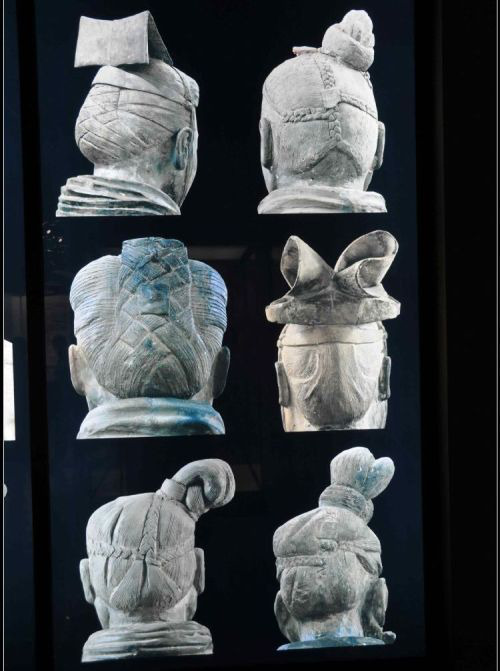
theres about 8000 of these guys down there, no two faces are alike. they're works of art. they're the manifestation of a cruel despot's delusions of grandeur. a talisman against the terrible inevitability of death, both pathetic and strangely pitiful. like watching a child clinging to his blanket, begging you not to turn off the light. they were a bunch of insignificant clay statues from a side chamber that was so small and unremarkable, no one bothered to write down the location. they were modelled after real people. their only purpose was to serve qin shi huang in the afterlife, so he could reign in heaven as he did on earth. now the emperor is just a ghost and his pawns are immortal. my dad and i visited them in the dead of winter, on a weekday, just so we wouldn't have to deal with tourists like us. the place had easily 500 people--not including the ones below ground. we traveled to xian via the old "green skin" diesel train. there are faster means, like highspeed rail but dad insisted i try the authentic way, the same way he would have traveled when he was my age it was also like, a quarter of the price but im sure that had nothing to do with it! back in the 80s carriages would get so packed people had to have their luggage passed in via the windows. as we chugged along, i read my book and my dad made us cup noodles. car is just a shortened version of "carriage", the word is the same but the mechanism is different. it's the same in chinese. i think if i told someone from the warring states period i could travel from the Kingdom of Qi to Qin in just four hours with my metal carriage, i'd be laughed out of town--or accused of being a spy and sentenced to 'death by carriage.' we hopped off the train at 4am and took a different "carriage." the taxi driver joked; "basically every dynasty put their capital in xian, stick a shovel anywhere and you'll turn up some national treasure or another." i wonder what it would have felt like to be a farmer digging a well and then out pops a remarkably realistic human head. statistical analysis show the soldier's faces bear a strong similarity to people living in the region today. the taxi stopped in front of a jewellery-hawking tourist trap and refused budge an inch until we went inside. did you know the terracotta soldiers were originally multi-coloured and painfully gaudy, just like the greek marbles? they were made assembly-line style. the arms and legs were made from the same workshops that made clay plumbing pipes and roof tiles. for quality control, the artisans were required to stamp their names. the workers who built these tombs were executed shortly afterwards, because only dead men can be trusted with secrets. qin shi huang's mausoleum is unlikely to be excavated in my father's lifetime, or mine, not unless i'm willing to take a BIG ONE for the team... instead of the tomb, they built some kind of qin shi huang-themed theme park next to it. not only was it tacky as hell the entrance fee was like $50. we went to the museum and i looked at bronze tools and pottery shards for three hours. look why can't we just crack the thing open i can't be the only one here whos dying from curiosity what if we all just took turns digging
#qin shi huangs terracotta army#warring states#qin dynasty#thinking about Her...<3 bronze tools and pottery shards <3#my writing
1K notes
·
View notes
Text
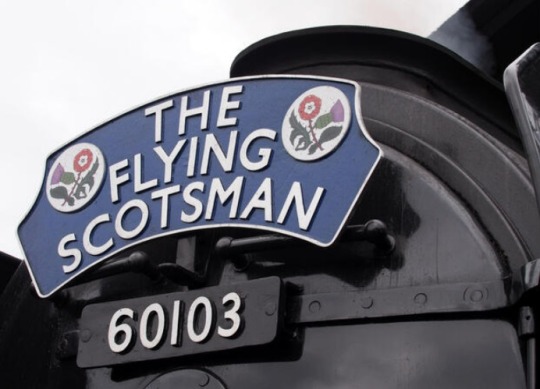
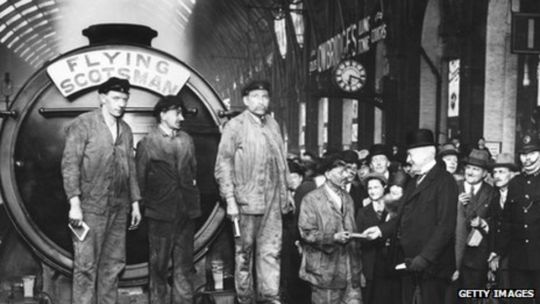
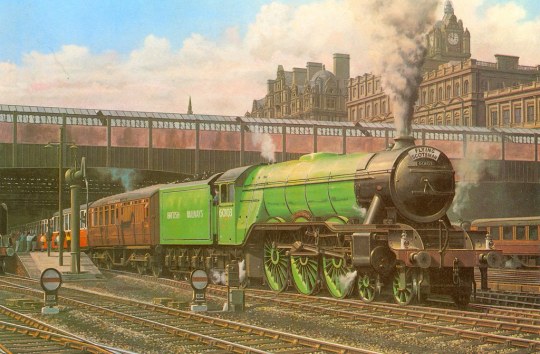

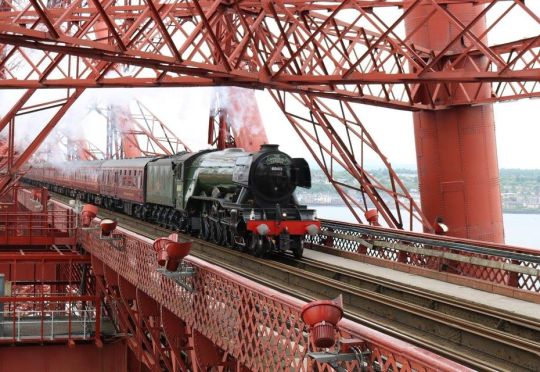
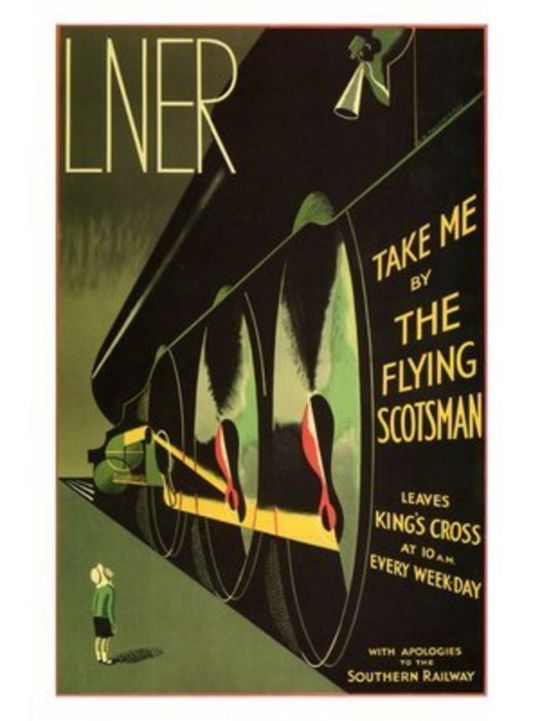
On 24th February 1923, the world famous steam train, the Flying Scotsman, went into service.
From the 1920s the train was considered the height of luxury. Onboard there were first-class restaurant facilities, a cocktail bar and radio equipment, so passengers could hear the horse-racing results.
There was even a hairdressing salon where men could have their facial hair shaved with an open razor, made possible because the barber's chair was set in such a position that there would be "no jolting". I'm not sure I would have a shave in a moving train!
The train's hairdresser was reportedly known as "Sweeney Todd of the Rails", given his precarious trade.
In 1928 the train broke the record for the longest regular non-stop train journey in the world, when the LNER ran an express service for the entire 393-mile route.
This record would last until 1948, when, unintentionally, the train broke its own record. The Flying Scotsman ran for 408 and a half miles in May of that year when flood damage to the main line caused diversions via St Boswells and Kelso.
Throughout World War II The Flying Scotsman was one of the few titled trains that continued to operate along the East Coast - it carried troops between London and Scotland, although the headboards and roofboards were removed for security.
And, on 21st June 1958, in a historic move which would signal the decline of steam, The Flying Scotsman was hauled for the first time by a diesel locomotive.
The service is currently run by government-owned East Coast.
In May 2011 they relaunched the service, painting one of their locomotives, the Class 91 No. 91101 with Flying Scotsman branding.
At the launch East Coast said the move was "part of our policy of bringing back train names and restoring pride, passion and even a touch of glamour and romance back to the East Coast railway".
It's not all a romantic journey though, just last September there was, what the called a "slow speed” crash with another heritage train hours before visitors were due to board it.
It happened lwhen the ocomotive was being shunted into place to be coupled with the Royal Scotsman train carriages, which were stationary.
A spokesman for Royal Scotsman train owner Belmond described the collision as “minor” and said there had been no major injuries.
"We are grateful for the prompt attendance by paramedics who were on site to assist the few passengers and team members who sustained minor injuries,” the spokesman said.
"One passenger and one team member are attending hospital for a precautionary check-up.
"All passengers have been transferred to a hotel where our team is on standby to offer support and to assist with our guests’ onward travel arrangements."
Last year ater travelling 10,000 miles across the UK as part of its centenary celebrations, world famous locomotive Flying Scotsman will spend the first part of 2024 on static display at the National Railway Museum in York before resuming rail tours later in the year.
The custodianship of The Flying Scotsman is up for tender later this year, so by this time next year I may be telling you about new "owners"
97 notes
·
View notes
Text

@renegade4-13 Here is the current draft for the story under the read more, not all characters have been introduced yet, but this is what I have written so far
Today is the 3rd Sunday of the Month, this means that the city of Saltpeter’s oddities, mistakes, and rarities have come together for Brunch, the national pastime of this peculiar crowd, among them are 2 librarians, a museum curator, a traveling beekeeper, a pen crafter, and about 20 other peculiar fellows. Take great note on the pair of drab brown haired people sitting at the very back of the train station restaurant. These boring sorts go by the names of Danny Jones and Danielle Jones and hold absolutely no relation to each other.
The thing about Danny Jones and Danielle Jones that is so interesting is not the fact that they share a birthday or last names despite being unrelated in any way other than a lesbian aunt 7 generations back, is the fact that these are the 2 most dull and boring individuals you will ever meet. Both have the personality of sliced bread and they aren’t much better in fashion either. There is nothing special about either Jones, they both live completely ordinary lives as shopkeepers on opposite ends of town. The most eventful thing either will do in a month is a Sunday Brunch. And yet both have managed to obtain a loving relationship with incredibly interesting people. And more interesting still is the fact that both are going to wind up dead at the end of the month.
Now to understand why this will happen, you must understand Saltpeter, importantly there are 4 cultural institutions in the city of Saltpeter, Firstly is the Library, it is one of the 3 which is actually known to the people of Saltpeter, and houses exactly 17,943 books and 67 are currently checked out. Next is the Museum of Maria Fernando, a town crazy lady who runs a museum on the way things used to be, this is the institution people like to forget, despite mattering quite a lot to the city, it has received exactly 17 visitors this month and stays afloat via Maria’s wife’s second cousin’s generous yearly donations in exchange for copies of old novels. The 3rd cultural institution is the rail station, it is on the route of the oldest train in the nation, the California Zephyr and is run by the best chef in the city, Leaf Ann Smith, capable of both killing a man and cooking in Omelette in under 20 minutes. Finally there's the Pen shop, they sell pens, specifically fountain pens, each are hand made by a Saltpeter craftsman, it made the list because we were paid 72$ to add it. If someone wants to stretch the definition of an institution, they could get it up to about 20 institutions and a playhouse worth of cultural amenities, but they would also have to include the brunch of the misfits of Saltpeter, which really shouldn’t be added on principle since it happens in Leaf Ann Smith’s train station anyways.
Now back to the Brunch, something very important is about to happen, There will be a rather large toast to the group. This is on account of it being the 3rd anniversary of the start of the groups monthly meetings. Somehow that is a point of pride among the members due to how it is the longest any Brunch group in Saltpeter has lasted after the Infamous Brunch fights 20 years ago. The Brunch fights were a rather dreary matter for such a pleasant pastime. 27 dead and 63 injured over a week. All because of bad French Toast at an upscale restaurant near downtown Saltpeter. And when I say bad, I mean bad, it was soggy, barely toasted, and didn't have any fruits except the one eating it. It's not even like Saltpeter doesn't have any strawberries, it was built on the largest strawberry farm west of the Mississippi. How do you fuck up French Toast that badly? How?
Oh right, the Toast to the Brunch crew, A tall woman in a Green Dress, a leather Jacket and Gold Hoop earings stands up, her hair is cut in a pixie cut. She grabs a Mimosa off the table and begins to talk. Hurricane Jane Rivers as they call her is many things, a lesbian, crazy, a storm chaser, dangerous, a purveyor of Pancakes, a painter and an aerial ace, but one thing she is not is consise. It would take 7 paragraphs to summarize her speech to that disparate group of oddities. In short though, she was thanking them for the best 3 years of her life. Little did she know, only half of them would see next month.
As her glass hits the glass of another member of the Brunch, a whisper rings through the air.
A tick of a second
And Bang, the train comes to a screeching halt outside the station, passengers get off as Leaf Ann Smith scrambles to hide her current mess of a Diner from the view of the wealthy tourists from downtown the tracks. The train is early for once. Precisely 17 minutes and 6 seconds early, something that should not have been possible given the fact that the train tracks were under repairs between Omaha and Saltpeter. And the train had a 2 minute delay when it arrived at the last station. This is all irrelevant if not to show how off guard it caught Leaf Ann Smith who usually manages to keep incredibly on top of the schedules of the train so she can run the station and Diner at once. Leaf Ann Smith is a busy Woman between the Diner, the Station and her time moonlighting as the union negotiator for between the carpenters guild and Sylvia Ink the sole crafter of fountain pens in Saltpeter and a person notoriously bad at paying their union dues. Now in a hurry, she rushes to kick out the Brunch party and clean up the messes left behind in her diner today. She had to rush the 20 people ot for a rather simple reason, she needs money to run a diner and the train is what brings her the best customers each day. As the crowd of weirdos and homosexuals scurries away. One Slyvia Ink bumps right into a Jim Halder. The only man in the city who still knows their face.
Jim Halder is a professor at the University of Saltpeter and has 40 years of Tenure there, starting as a professor at 31, despite being in his 70s, he looks rather young, with a smooth face and deep black hair, this however is a lie. If you look closely at his hair, you’ll notice a long white steak and an indent on his face above his left eye. This is because Jim’s face is not his first, while studying in the mines of Saltpeter, his face was burned off, and a new wooden one had to be constructed by Sylvia Ink, one of the only 4 things they ever made that wasn’t a fountain pen, the other 3 are another less lifelike mask, the hilt of a blade, and pen holder to hold their pens. Jim is a man of learning, giving every book he writes to the library after he publishes it, 14 of the books that are currently checked out were donated by him. If you were to inspect Jim closely you would also find that you could knock him over quite easily with a single punch due to his slim frame. The university that he works at is not considered a cultural institution by even the most generous people in Saltpeter because nothing of interest has been produced in the for 67 years. Well apart from Sylvia Ink and Jim Halder, and their incredible works of course, the two little wooden people of Saltpeter.
Jim was naturally surprised to see Sylvia at the station, but glad nonetheless to see that young fellow out of the workshop. When they bumped into each other, quite literally, as Sylvia had been too focused on a croissant to notice the man ahead of him. He proposed to the young carpenter that they go over to the old river park for a stroll to discuss the terms for the new project.
Despite being a chilly 50 degrees out, if you were to head across town from the rail station, over to the river. You will find 2 men on the banks of the river. One is sitting in a rather large Sycamore tree, reading a book, when he hears the train rush past. He is wearing a blue sweater and long pants, the other man is dressed quite poorly for the weather, he is wearing nothing but a swimsuit and his golden locks of hair. He stupidly planned on Swimming in the river today. He is 6 feet tall and somehow not freezing. These peculiar fellows meant to be at the brunch but the one in the Sweater, Alex Cela had set his pocket watch 3 hours behind. Even knowing this now, he was still caught off guard by the train crossing over the river since the train had not been early in 3 months. Despite being totally different, one a bit of an idiot and the other a top marks student at the University of Saltpeter, they have been dating for 2 months, and six days if either had remembered to keep track of that. They met at the park, Alex was trying to paint the trains and Damien had been trying to teach a cat how to swim, the pair of them instantly became friends after Alex stopped trying to attack Damien for ruining the painting. And the two started dating a week after they met, when Damien kissed Alex under an Oak tree in the town square. These 2 lovers were not however the only people in the park. There were about 400 give or take 27 people in that park on this chilly morning. But none of them Matter, None of them except for Emily Rock
88 notes
·
View notes
Text

[2006]
“So, there we were…” Azalea eulogized. “An enormous rake of twelve-wheeled coaches running behind us.”
“They were livestock vans carrying I'd guess sheep.”
“Hundreds of them, all pushing against us!”
“There were at most fifteen.”
“We fought hard, barely maintaining our hold on the wet rails!”
“It was mildly cloudy and the rails were dry. We were probably doing maybe two over the speed restrictions.”
“We came tearing down the hill and, finally regaining control, glided into the station in spectacular fashion. We were deemed heroes by everyone that was there, had special nameplates casted, and were given residence in the National Railway Museum!”
River sighed. “She's been having this recurring dream for nearly a month now.”
Had he the capability, River would likely be massaging one of his temples by now.
Almond and Simon shared a look. A look that asked “how the hell do we respond to this?”
#ttte#thomas and friends#thomas the tank engine and friends#sodorgust#ttte oc azalea#ttte oc river#ttte oc almond#ttte oc simon#ttte oc cedric#ttte oc norbert#ttte oc brandon#i bet myself i couldn't make a scene in a big yard with exclusively my characters
12 notes
·
View notes
Text
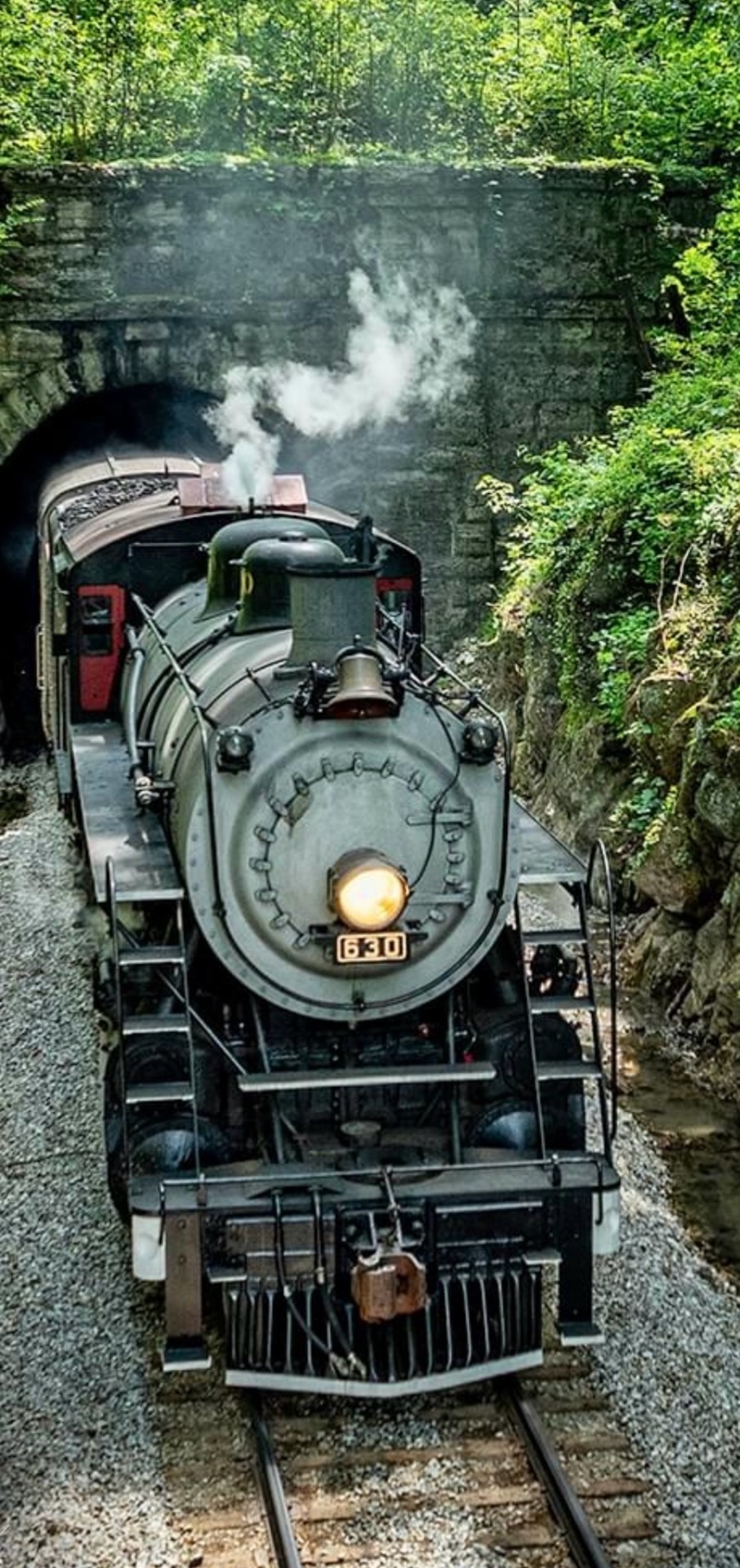
Tennessee Valley Railroad Museum’s steam locomotive Southern Railway 630 exits Missionary Ridge Tunnel as it approaches East Chattanooga, Tennessee with a trainload of passengers, on April 28th, 2024.
According to Wikipedia: Southern Railway 630 is a 2-8-0 "Consolidation" type steam locomotive built in February 1904 by the American Locomotive Company (ALCO) of Richmond, Virginia for the Southern Railway as a member of the Ks-1 class. It is currently owned and operated by the Tennessee Valley Railroad Museum in Chattanooga, Tennessee where it resides today for use on excursion trains.
According to the Tennessee River Valley Tourism site: Tennessee Valley Railroad Museum's passenger trains run on an historic route which includes Missionary Ridge Tunnel, completed in 1858 and on the National Register of Historic Places. The tunnel is the primary reason TVRM runs on the three-mile section of the former Southern Railway. As railroad equipment grew too large to pass through, the single-track tunnel became a traffic jam for an other wise double-track railroad. Southern Railway abandoned the three-mile portion of the line and built a new section around the end of Missionary Ridge, avoiding the tunnel altogether. TVRM restored rails through the tunnel in 1971 and continues to use the pre-Civil War Tunnel daily.
#trainphotography #railroadphotography #trains #railways #trainphotographer #railroadphotographer #jimpearsonphotography #PassengerTrain #TennesseeValleyRailroadMuseum #TennesseeTrains #steamtrain #tvrm
20 notes
·
View notes
Note
Remember that new build Emily meets Race to the North veteran Emily plot I sent a while back? Well, I finally wrote part of it down. Took me long enough XD
It's still rough around the edges, so the flow is choppy. Sorry in advance!
______
Emily watched her counterpart prepare a mixed train. Three coaches in the front, with two mail wagons trailing behind them. The coaches were identical to her own, the same dark green both Stirling engines wore with cream and gold accents. She had tried to find any real distinction between the two sets, even something as insignificant as a unique scratch. But alas, she found nothing worthy of mind.
The same could be said for the two of them. Identical in every way. Color, shine, voice, and personality.
Having another Stirling Single alongside her brought a euphoria she hadn’t felt in decades. It would be a lie to say she didn’t miss parts of her early life on the Great Northern Railway, mainly her siblings. Helena’s home was all the way in York at the National Railway Museum and each meet up was always mixed with some melancholy. They were the last of their class. A fact that always hung over them when in each other’s presence, no matter if they were at the Museum or on Sodor.
This was different. There was no special train that needed to be pulled. No television spotlight with reporters, cameras, and crew from various news stations everywhere. No celebration for the anniversary of a moment in history. Simply two Stirling Singles in a yard, going about their tasks as any engine would on a normal day. Just like it used to be on Great Northern Railway.
The Fat Controller thought it was best to have both work on Emily’s branch line. Both knew exactly what to do and when to do it. The decision came with the benefit of minimizing changes to schedules. A luxury when dealing with his unique fleet of engines. He came before them earlier that morning to assign their specific tasks for the day. He had struggled with addressing them individually, with them sharing the same name. In the end, he simply put his clipboard along their running plates, allowing them to read its contents.
She thought the universe- or was it universes in this case? -had an extremely unique sense of humor. It had decided to bless the Island of Sodor with another Emily. The confusion on all the Tidmouth engines’ faces was priceless. Curiosity mixed with caution for there were now two Emilys. TWO.
Unique could also describe the second engine’s entrance onto the island. Emily had been resting at the third platform of Knapford Station, waiting for the passengers to clear out of the coaches. She managed to pull into the station exactly at the advertised arrival time. The habitual refusal to be late even by a minute had died with the Great Northern Railway, but the satisfaction of making good on time had never waned. She still had it, even after over 140 years of service.
Suddenly, a bright flash of white erupted in front of the station and an engine looking like her appeared on the rails. And on a collision course with her. The new arrival slammed on the brakes and slowed to stop less than an inch from Emily’s buffers.
“I’m sorry. I’m sorry. I’m sorry.” Said the engine desperately, still not completely recovered from the narrowly avoided accidented. But Emily didn’t hear her, not entirely. The first syllable was all she was able to register before a question occupied the entirety of her mind. Why does she look and sound like me?!
The second engine had barely opened her eyes when her face took on an expression of pure confusion and astonishment. She immediately jolted backwards, putting some distance between the two of them.
Silence permeated the station. Nobody, not even the Fat Controller or the other engines, wanted to believe what was in front of them. Two Stirling Single engines in emerald with the number 12 on her tender occupied the rails next to Knapford’s number three platform.
Puff! Puff!
A familiar whistle brought her back to the present. The mixed train was ready. Emily had agreed to wait until both of their trains were complete, not wanting to leave her ‘twin’ behind. She had shunted all her trucks bound for the flour mill minutes earlier and was already hooked up to them. Allowing her to dwell on the second Stirling for a moment.
Looking back at the other train, she noticed 10 more mail wagons had been added. It seems this was to be a very heavy mixed goods train. Too heavy perhaps.
“There is no way you’re pulling all of that”
“What are you talking about?” The other Emily replied. Slightly offended at being underestimated, by herself, nonetheless. “This is a standard train.”
That couldn’t be right. She could manage that train fine for a short while. But, all day? She might be too tired to pull it at the correct speed at day’s end. To do this regularly would be absurd.
“If you fall behind schedule-“
“I won’t”.
“You don’t need to prove anything to me. Just, please be careful”.
“Don’t worry.” A gentle smile spread across her lips. “I know what I’m doing. Good luck!” Emily returned the smile before puffing her whistle, taking the delivery of flour with her.
____
At this point in the story, both Emilys (I don't know you'd spell that word lol) don't know they were built almost 100 years apart and are very different machines below the surface.
My headcanon for new build Emily is some liberties were taken with her design. For example, she was welded instead of riveted. Her boiler is a more modern design, and able to take advantage of the higher tolerances of her frame. Allowing it to run at a higher pressure than the original Stirling Singles could. (She might have an extra cylinder, but that's still in the 'maybe' category rn)
This makes hauling freight easier than her counterpart. She still isn't as good as some of the other more dedicated mixed traffic engines, but it's extremely unwise to underestimate her.
I think a good analogy would be the F-15C versus the F-15E. The C-model was designed for air-to-air only, while the E was designed for more air-ground-air capability without sacrificing any of the C's air-to-air. Furthering the analogy, the F-15E is heavier while having significantly more powerful engines.
New build Emily is heavier, but she also has a more powerful boiler to go along with the extra weight. Mixed traffic fits her better than strictly passenger work
I'm so sorry if this analogy is confusing, it was the only one I could come up with
This is really cute!
8 notes
·
View notes
Text


Regional Resurgence: Education and Economic Growth at the Forefront of State of the Region Dinner Talks
The R4 Conference's traditional State of the Region dinner served as a platform for shared vision for economic growth and regional stability for member-nations. Elected officials from each member-nation delivered keynotes, sharing their national commitments and plans for fast-speed rail systems, increased intra-regional trade, and enhanced opportunities in education - all of which are set to turn the tides for the region's future.

The R4's governing body laid out plans for a speed rail network connecting the countries, designed to increase trade and commerce, while minimizing transit times and ecological footprint. Officials also highlighted measures to boost educational exchanges and university opportunities within the region, hoping to foster the intellectual potential of the region.Other topics covered include internet access, climate change, and shared other shared goals and initiatives.
The State of the Region dinner yet again showed that cooperative efforts amongst the R4 member-nations plays a fundamental role in building a more prosperous and well-connected region.
The conference continues with a museum visit, wreath placement, and will end with a state dinner hosted by Her Majesty and other senior members of the royal family.



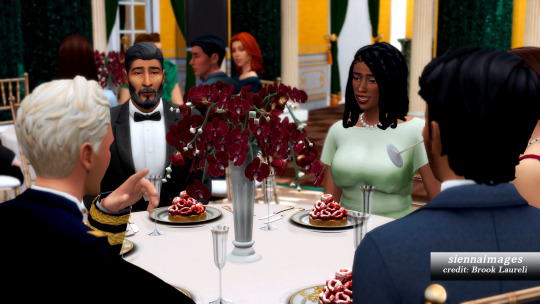

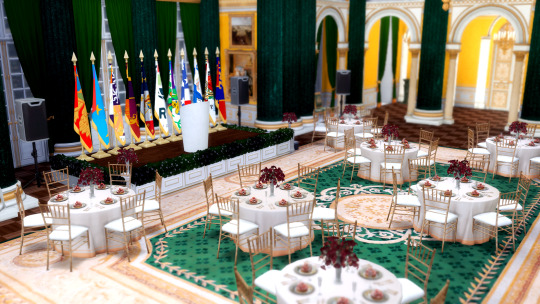
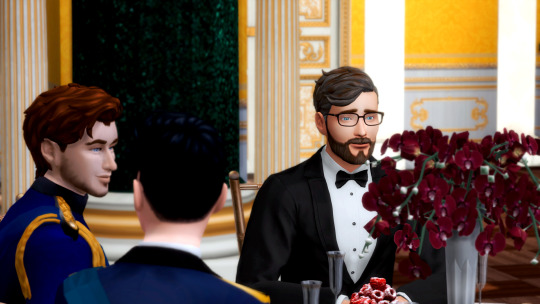


The Kingdom of Vernick (@housekonig)
United States of Simerica (NPC Nation Version)
The Kingdom of SimDonia (@bridgeportbritt_
The Empire of Pierreland (@officalroyalsofpierreland)
The Trentallia Union (@trentonsimblr)
The Kingdom of Uspana (@nexility-sims)
The Ionian Union (@funkyllama)
Empire of Francesim (@empiredesimparte)
The Kingdom of Illyria (@the-lancasters)
#housekonig#ts4 royal#ts4 royal family#ts4 royal legacy#ts4 royalty#the sims 4 monarchy#the sims 4 royal family#ts4 royal simblr#R4 conference
41 notes
·
View notes
Text
















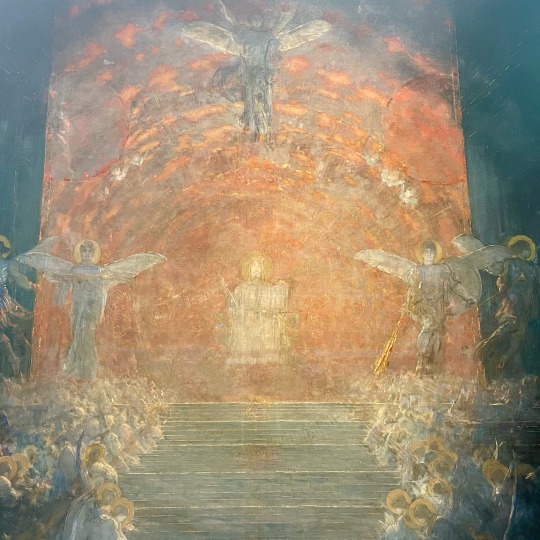
what therefore you worship as unknown, this i proclaim to you.
web weaving, on the greeks and the Logos.
paul's speech to the areopagus, acts 17:22-24//view from the areopagus, night//eleusis//sign in eleusis archaeological museum, from cicero's de legibus//the birth of comedy, susannah black roberts (2023)//gothic cross graffiti in eleusinian sanctuary//temple of apollo, corinth//1 corinthians 15:12-14//orpheus and eurydice, virgil//orpheus leading eurydice from the underworld, jean-baptiste-camille corot (1861)//sir orfeo (c. 1300-1400)//icon of christ defeating hades, monastery of osios loukas//altar rail, corinth//1 corinthians 15:20-22//icon of christ, church of st. dimitrious, thessaloniki//revelation 1:17-18//behold the bridegroom, nikolaus gyzis (1899-1900, athens national gallery)
#faith tag#this is honestly just a shameless plug for the linked birth of comedy article#pls read it i think about it like once a business week#unfortunately i couldn't figure out how to include twhf it didnt work thematically#i redid this significantly since the last time i posted it
16 notes
·
View notes
Text

Ron Ayers
Engineer and aerodynamicist involved in land-speed record-breaking cars and guided missile design
Working at the Handley Page company, and then in the guided weapons division of the Bristol Aeroplane Company (now part of BAE Systems), in the 1950s and 60s, the engineer and aerodynamicist Ron Ayers, who has died aged 92, became one of Britain’s most experienced supersonic and high-speed aircraft designers.
Following retirement in 1988, he took on a volunteer role at the Brooklands Museum, Weybridge, and was fascinated to discover, among the aviation archives held there, aerodynamic and wind tunnel work on the prewar generation of land-speed record-breaking cars. This led to Ayers meeting Ken Norris, designer (with his brother Lew) of Donald Campbell’s Bluebird car and jet-powered boat. With these two vehicles, in 1964, Campbell had achieved world records, for land speed of 403.1mph (648.73 km/h), and for water speed of 276.3mph (444.71km/h).
Norris had also been manager of more recent world-record-breaking runs by the self-styled “adventurer and engineer” Richard Noble with Thrust, a car that gained a world record of 633mph (1018.7 km/h) in the Nevada desert in 1983. When Ayers bumped into Noble by chance, while they were both passing through Bournemouth airport in 1992, he found that Noble’s next project was the Thrust SSC, a jet-powered “car” intended to break the sound barrier on land – at a speed of about 767mph. “Don’t be an idiot – you’ll kill yourself,” Ayers said.
The problem is that a land-speed car is an “interface vehicle” running between air and earth. Designing a stable supersonic shape for that regime is quite different to making an aircraft or missile that could achieve supersonic flight safely in free air. On land, where would the supersonic shock waves around the vehicle go and how might they upset it? What would the airflow underneath it be like and how might it lift or destabilise it? There were no precedents. But, intrigued by the challenge, Ayers mulled over the problem and, a little later, got back to Noble saying that he thought he could see a way to do it.
There are no wind tunnels capable of modelling this situation, but between them, they called in favours and all their contacts to win time for day-long simulations that ran on Britain’s most powerful supercomputer (a Cray machine), in parallel with physical experiments with a scale model attached to an 800mph rail-mounted rocket sledge at the Defence Research Agency’s establishment at MOD Pendine in Wales.
The research paid off, and on 15 October 1997 the RAF pilot Wg Cmdr Andy Green finally achieved a supersonic world record of 763.035mph (1,227.986 km/h) in Thrust SSC – a record that still stands.
Ayers was born in London, the son of Frederick Ayers, an engineer, and his wife, Maud (nee Jardine). To escape bombing during the second world war, in 1940 the family, and Frederick’s factory, moved to Barnstaple in Devon. Deemed not suitable for university, due to chronic childhood ear infections (alleviated with the advent of penicillin) and an interrupted education, Ron went straight into the Handley Page company in 1950 as an engineering apprentice, where he worked on the Victor bomber project. This also allowed him “day release” to gain a degree in aeronautical engineering from the University of London. He then won a scholarship to study for an MSc at Cranfield College of Aeronautics (now Cranfield University).
Britain had some of the most technically advanced aircraft companies in the world and Handley Page was one of the most esteemed, at the forefront with an exceptionally advanced aerodynamic design team. Its Victor bomber became central to the V force – Britain’s cold war deterrent. These aircraft had been devised to evade interception by flying faster and higher than any aircraft before.
It is impossible to overstate the importance of aerodynamic science to national policy at the time. Cold war aircraft development was a contest of the brightest minds to achieve unprecedented performance in the tricky transonic regime – the speed range approaching the speed of sound. As the new postwar generation of military aircraft approached that speed, the airflow over them could be mixed – flowing in a familiar, well understood way in some areas, but becoming supersonic over parts where the air accelerated.
This supersonic (incompressible) flow was a new, little studied, phenomenon, and it posed fresh problems in stability, control and structural integrity. The whole industry was supported closely by the Royal Aircraft Establishment at Farnborough, Hampshire (and at Bedford). This was probably the biggest research enterprise in Europe in those years.
This was the milieu in which Ayers developed – solving problems that the feasibility of Noble’s supersonic car would recall. The national deterrent policy back then was to devise near-supersonic bombers that could outfly the fighter defences, exploiting speed, height and the limitations imposed by radar warning time. But at the same time, the aim was to create home defences that could catch anything similar developed by an enemy.
As part of this war of innovation, the Bristol company was developing the Bloodhound guided missile, intended to destroy incoming enemy aircraft, so it is intriguing that Ayers in 1956 joined the Bristol’s guided weapons division, becoming chief aerodynamicist. The revised Bloodhound Mk II that he worked on was a highly effective missile intended to destroy bombers attacking Britain, capable of reaching 65,000ft (nearly 20,000 metres) at more than twice the speed of sound. It went into service “to defend the deterrent” – the V-bomber force that Ayers had originally contributed to in his first job.
However, on the death of his father, Ayers left aeronautics and in 1967 took over the family business, which made printing presses, remaining with the company until it was sold in 1988.
In retirement, as well as volunteering at Brooklands, Ayers was actively involved in promoting engineering education, and he viewed the Thrust SSC record-breaking attempts as valuable publicity to showcase engineering and its intrinsic interest. Subsequently, he was chief aerodynamicist for the JCB 2006 Dieselmax car, which still holds the world diesel car record of over 350mph (560 km/h), and also for the projected 1,000mph Bloodhound car.
All this highly original work done in the later decades of Ayers’s life was, he said, “much more fun than mowing the lawn”.
Ayers married Irene Graham, a psychologist, in 1968. She died in 1991 and he is survived by their son, Roger, and granddaughters, Lily-May and Daisy.
🔔 Ronald Frederick Ayers, engineer, born 11 April 1932; died 29 May 2024
Daily inspiration. Discover more photos at Just for Books…?
13 notes
·
View notes
Text
Happy Disability Pride Month
I want to wish a Happy Disability Pride Month to everyone; to everyone with a physical disabilities, mental illness, neurodivergencies, cognitive and intellectual disabilities; every one who's disability interacts with their race, gender, sexuality and class.
As this is a train related blog, I want to showcase here some history about the relationship between disability and rail transport. For those of us for whatever reason cannot use a car due to disability or poverty, access to a good, working public transport system is crucial to conduct the business of living.
Like a lot of folks in the railfan community, I am on the Autism spectrum, which can and does impact me in certain ways in getting about. I cannot drive because I have no car (for multiple reasons to do with cost and my conditions), so the train and bus is the most reliable way for me to go about my day (subject to lots of things of course).
Access to regular, safe and working public transport is a necessity for all and a Disability right.
The National Railway Museum in York has a dedicated exhibition to the experience of rail travel by disabled commuters, Go As You Please, as well as a short film We Do Go Out And About.
youtube
The video is captioned and has British Sign Language for all the spoken word parts.
#Disability Pride Month#real railways#Gunzel speaks#National Railway Museum#Youtube#real railway stuff#public transport
8 notes
·
View notes